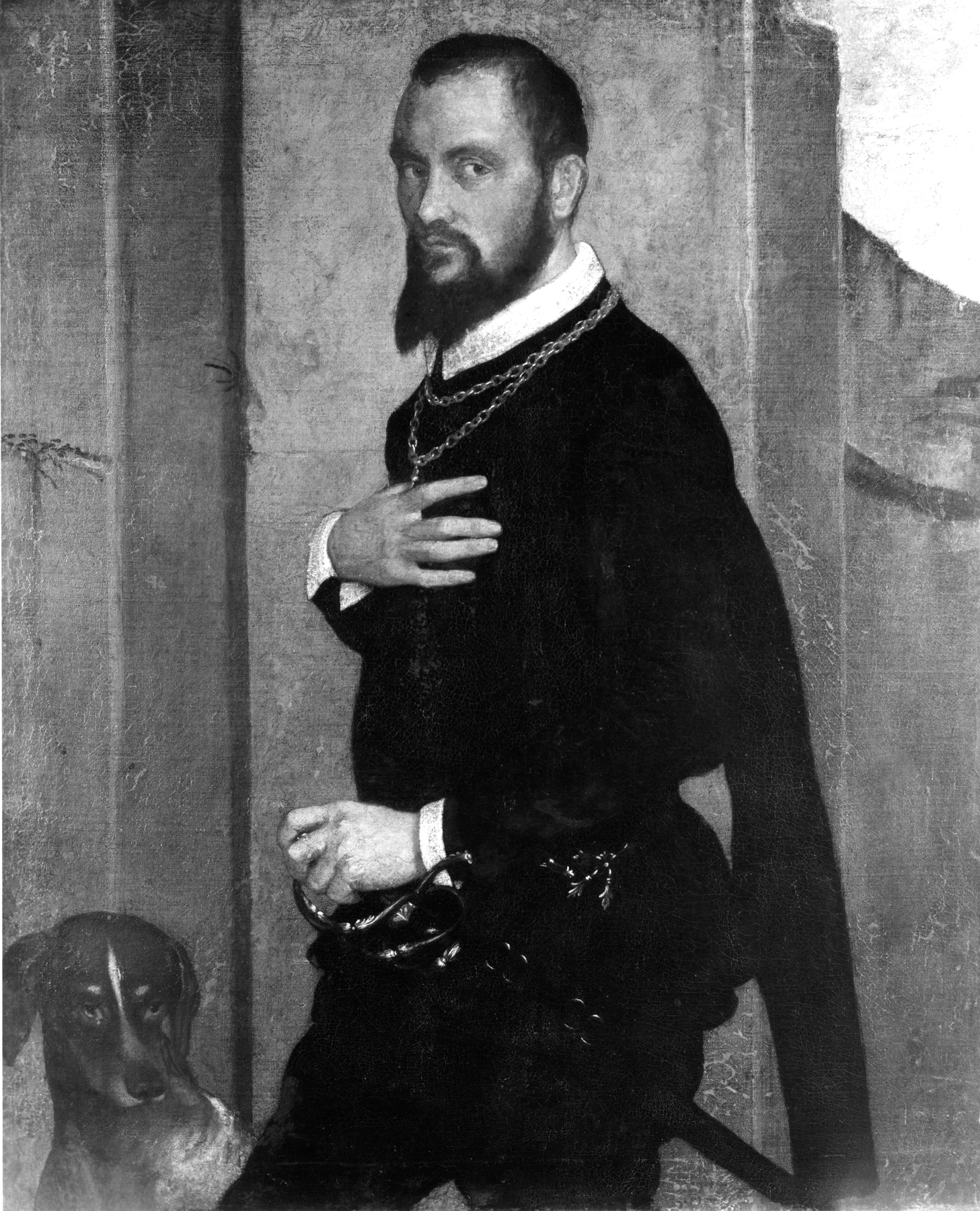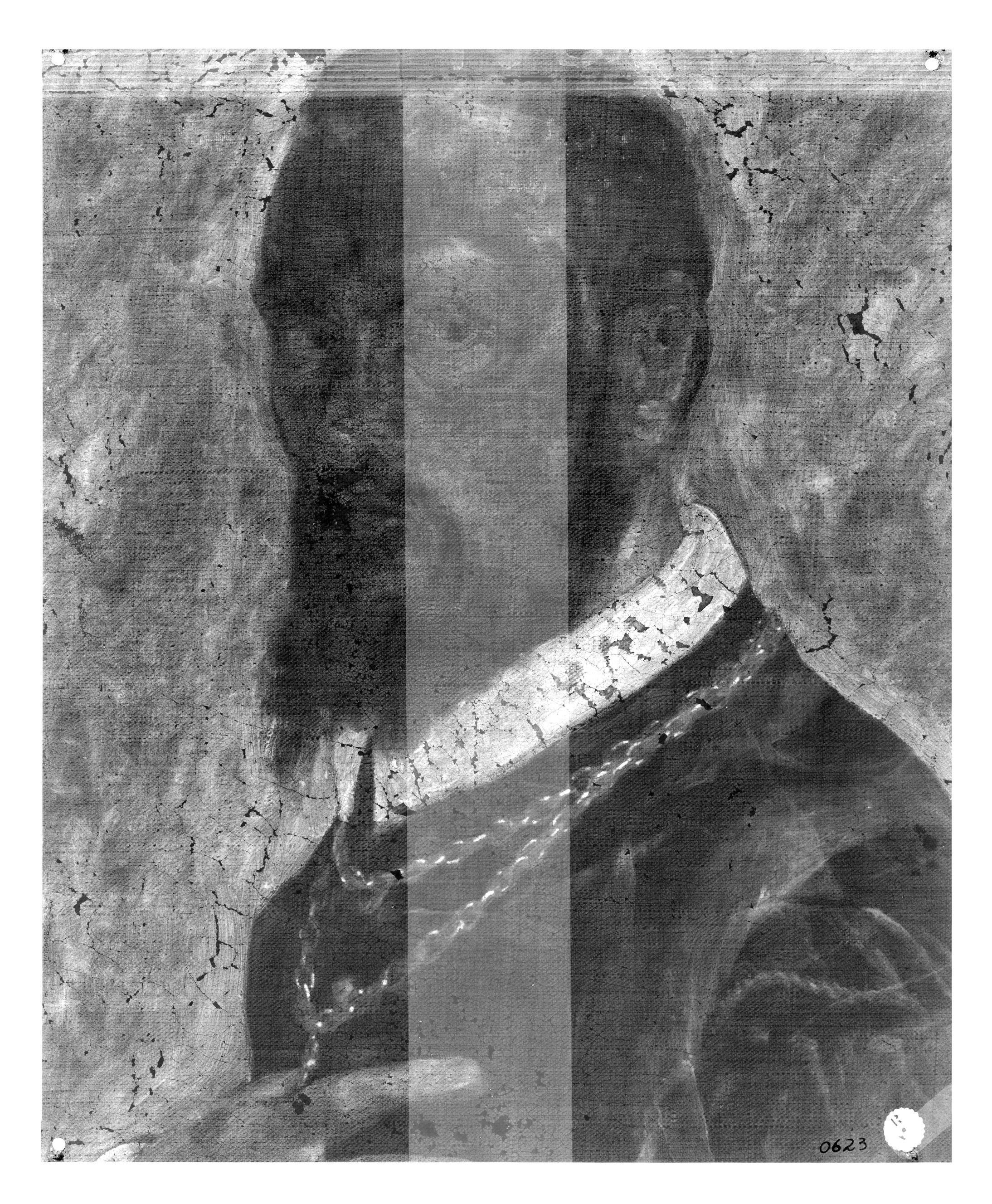Portrait of a Gentleman with a Dog
(Renaissance Europe )
The surface of the painting has suffered significant damage and limited research has been carried out on the painting. Originally it was likely a fine portrait.
The sitter is unknown but likely a member of a noble family of Begamo, the northern Italian city with which Moroni is associated. By the mid 1500s, it was quite common for a nobleman to be accompanied by a hunting dog, more as an indication of a classic noble pursuit than as an object of affection. As the nobleman is posed in left profile, his most striking attribute is his swept-hilt rapier (sheathed) in the newest style and probably made in the region. Although there appears to be a pendant weighing down the gold chain round his neck, he covers it with his right hand. This curious gesture simply calls attention to the fact that he is shielding something from our view. His pose turned to our left and looking back, in front of what appears to be a pier on the left side of a semi-circular, empty niche in ruins can be compared with the Portrait of Giovanni Gerolamo Grumelli (with a more fully-articulated setting) dated 1560 in the Palazzo Moroni, Bergamo. A similar backdrop was used for several of his portraits.
The technical status of the painting, as described in Federico Zeri, Italian Paintings in the Walters Art Gallery (Baltimore 1976) no. 297, has not appreciatively changed.
Inscription
Provenance
Provenance (from the French provenir, 'to come from/forth') is the chronology of the ownership, custody, or location of a historical object. Learn more about provenance at the Walters.
The Counts Consolati, Trento; Luigi Grassi, Florence (?); Henry Walters, Baltimore, 1911 (through Bernard Berenson); by bequest to Walters Art Museum, 1931.
Conservation
| Date | Description | Narrative |
|---|---|---|
| 1/30/1940 | Treatment | binding stabilized; cleaned; coated; filled; inpainted; lined; other; splits mended; stabilized; varnish removed or reduced |
Geographies
Italy, Brescia (Place of Origin)
Measurements
Painted surface and stretcher H: 44 3/16 x W: 35 7/16 in. (112.3 x 90 cm)
Credit Line
Acquired by Henry Walters, 1911
Location in Museum
Not on view
Accession Number
In libraries, galleries, museums, and archives, an accession number is a unique identifier assigned to each object in the collection.
In libraries, galleries, museums, and archives, an accession number is a unique identifier assigned to each object in the collection.
37.501




